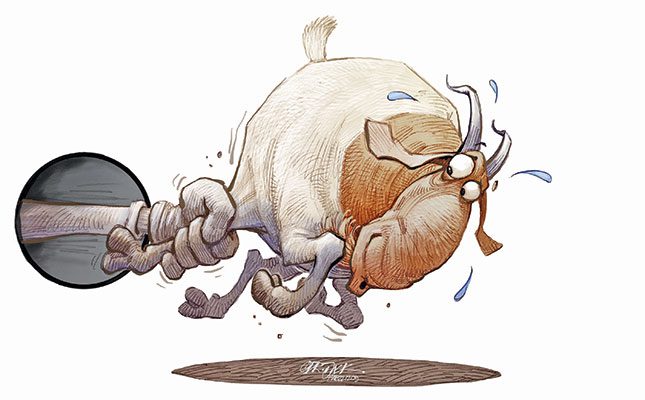
One of the most prominent motives behind livestock theft identified in this study was financial, either as a result of self-enrichment (immediate gratification), financial difficulties and desperation, or for survival.
Other motives included revenge taken by disgruntled workers on farmers, substance abuse, a yearning for wealth and status, and a desire to own livestock.
The motives could overlap, such as when the perpetrators felt pressured to live up to what society demanded of them, or where their decisions were influenced in other ways. Causes also entailed unemployment, an opportunistic attitude, a previous criminal history (learnt behaviour), negative peer association, low or no formal education, and a large family size.
The case dockets I analysed revealed that the perpetrators were often driven by the need to acquire livestock for traditional ceremonies and customs, such as lobola.
From all backgrounds
However, my findings confirm that perpetrators of livestock theft come from different race, ethnic, socio-economic and cultural backgrounds, where the motives include both greed and need.
The criminal element doesn’t exclude respected, trusted and sophisticated individuals who steal without empathy for their victims.
The perpetrators all displayed rationality in their decision to commit the crimes. They personally sought to gain maximum benefit and avoid punishment, while weighing up the costs and benefits of the crime.
In effect, the perpetrators’ decisions were guided by the strains they experienced, such as unemployment, financial desperation, self-enrichment, greed and need, all factors that may lead to frustration and disappointment.
Modus operandi
Once the criminals were motivated, they identified livestock as a suitable target due its high monetary value. The animals were easily herded or could be loaded onto a vehicle.
The perpetrators based their selections on targets they were familiar with, and their activities often intersected with the paths of their targets. For example, some drove around in search of potential targets, while others passed and noticed livestock on their way to look for work.
During the decision-making process, the perpetrators drew on past experiences, such as previously committed crimes or learnt behaviours derived from interacting with peers.
This reinforced their criminal behaviour and enabled them to weigh up the costs (such as punishment) against the rewards (financial incentives, for example) of the crime. They could even enjoy the risk element and operate more efficiently as a result.
Lack of restraint
The perpetrators displayed low levels of self-control in that they were guided by engaging in risky behaviour and the immediate gratification of obtaining the livestock without having to work for them, and making fast money.
They also denied any responsibility for their actions and, for instance, blamed others or claimed there were worse crimes than livestock theft. One suspect said she thought she could take some sheep for herself because “she did not have food in the house”.
Almost 50% of the 35 perpetrators interviewed were between 17 and 25 years old, followed by those between 36 and 48 years of age. Most had children even though they weren’t married, which was in line with statistics for hijackers and cash-in-transit robbers.
Tough childhood and family life
Nearly 25% of the offenders reported a difficult childhood or family life. Variables such as the family’s socio-economic status as well as its structure, including parental supervision and parent and sibling criminality, significantly influenced their leaning towards criminal behaviour.
Some of them had interacted with antisocial friends and didn’t get along with others during their school-going years. Others reported having friends who were rebellious and truant from school, who stole things such as chickens, and who engaged in general delinquent behaviour. These peer effects can follow a person into adulthood.
A person’s history of criminal convictions is a good indication of his or her future criminal behaviour. My findings concluded that a high percentage of the perpetrators had previous convictions, some of which were for livestock theft.
The accused were found to have knowledge of or a background in dealing with livestock, and included farmworkers, livestock owners and traders. Police officers were also implicated in some of the cases.
A few of the thieves were simply random opportunists, that is, they stole livestock when the opportunity presented itself without any formal planning or knowledge of the animals.
My study also showed that perpetrators were more inclined to work in groups, with relatively few working alone.
They were also more likely to be recruited by other parties to steal livestock. The findings confirm that the lucrative nature of livestock theft is the biggest driving force behind the crime, and that it needs to be addressed more aggressively.
The views expressed in our weekly opinion piece do not necessarily reflect those of Farmer’s Weekly.
This is an edited version of Cecili Doorewaard-Janse van Vuuren’s dissertation titled, ‘Livestock theft: a criminological assessment and sample-specific profile of the perpetrators’ (2020). To contact the author, phone 012 433 9499.










